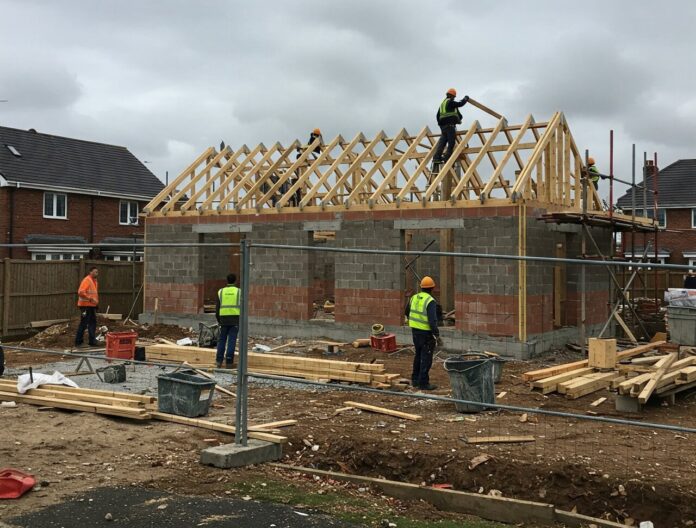The UK housing market is facing a stark regional imbalance as new data points to accelerating development in Scotland and the North, while London’s supply pipeline slows sharply under mounting financial pressure.
The latest figures from the NHBC show that seven of 12 UK regions experienced growth in new housing registrations in 2024.
Registrations were particularly strong in the North and Scotland, while London suffered a 48% drop – driven largely by constrained capital among affordable housing associations.
This trend, industry analysts warn, could further widen the supply-demand gap in the capital, with significant implications for brokers and lenders reliant on volume in high-value postcodes.
WORSENING DEVELOPMENT CONDITIONS
According to a new sector report from the Heligan Group, worsening development conditions – spurred by higher gilt yields, rising finance costs, and planning delays – are putting pressure on project viability, especially in the South.

Sam Lewis, head of debt advisory at Heligan, said: “Rising yields have compressed development margins by lowering Gross Development Value (GDV).
“Many developers have needed to reassess project feasibility, particularly in commercial sectors, where financing has become harder to secure without pre-lets or public sector anchor tenants.”
With senior debt now typically priced between 6.5% and 10%+, and bridging finance reaching annualised costs of up to 12%, smaller developers are being squeezed out of the market.
In 2024, housing starts among major housebuilders fell just 4%, but smaller players saw a 36% decline.
BROKER IMPLICATIONS
The disparity has real implications for mortgage brokers, who often rely on SME developers to drive regional pipeline and specialist lending opportunities.
Lewis added: “Developers are dedicating more time to strategy and less to on-site delivery, which is ultimately impacting the total number of homes being built.”
Across the commercial sector, shifting demand patterns continue to disrupt deal flow. Secondary office space remains oversupplied due to hybrid work habits, while prime offices and life sciences hubs are driving limited new activity.
Retail, meanwhile, remains under structural pressure despite a brief post-pandemic footfall recovery.
TIGHTER FUNDING
For those working in development finance or bridging, the funding environment remains tight.
Lenders are increasingly cautious, with panel valuations often falling short of developer projections. This growing disconnect is slowing transactions and pushing developers toward more complex capital stacks.
“Lenders are taking a cautious, backwards-looking approach, while developers base valuations on future potential and market recovery,” Lewis said. “This disconnect is making it harder to secure funding, particularly for residential and regeneration schemes, pushing developers towards alternative finance and delaying project delivery.”
While some relief is expected if the Bank of England begins to cut rates later this year, Heligan warns that housing completions will likely remain in the low 200,000s in 2025. Labour shortages and regulatory uncertainty continue to hamper sentiment.
ACTIVE PBSA MARKET
However, the outlook is not entirely gloomy. PBSA (Purpose-Built Student Accommodation) schemes, particularly in cities like Manchester and Birmingham, remain active thanks to university partnerships and institutional funding. And in the residential sector, regions such as the Midlands, North, and Scotland are likely to see stronger development activity.
“Regionally, the Midlands, North, and parts of Scotland should outperform in development, while London’s housing supply remains constrained by financial uncertainty among housing associations,” Lewis added. “Commercial investment will focus on prime offices and life sciences hubs, while secondary office markets and retail remain weak.”





